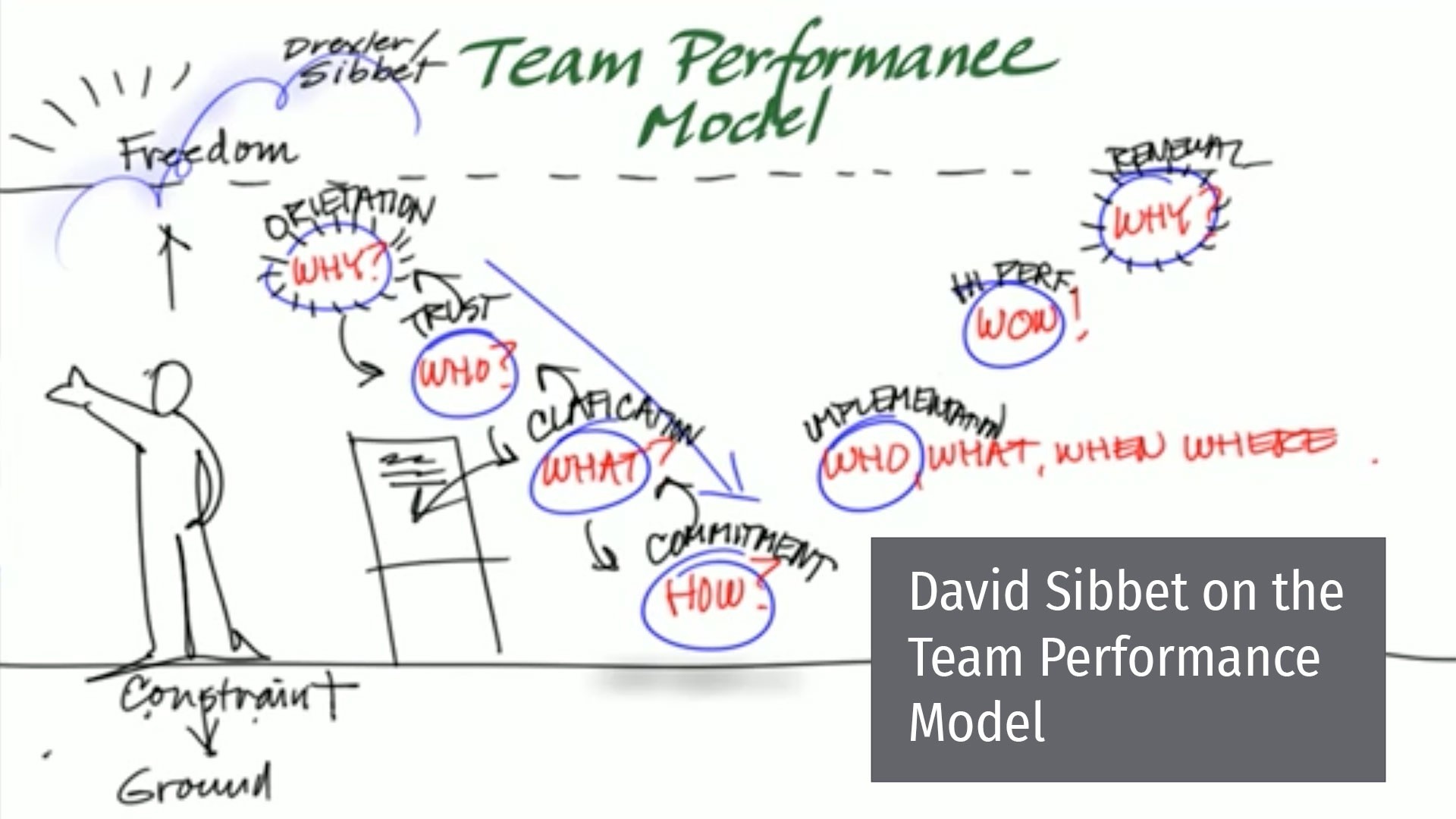Building a Better Team Metaphor
Jun 13, 2011
Author: David Sibbet
We’ve all heard of the term “team building”—based on the industrial-age metaphor that people are like construction blocks. You might not even think of this as being a metaphor, but it implies you start with nothing and somehow, after a group process, teams are “built” and everything works. When Allan Drexler and I set out to create a comprehensive model for team development in the 1980s, we agreed that the building metaphor doesn’t capture how groups really work. Teams are more like athletes and artists than buildings, and are in a journey that fluctuates between freedom of aspirations and real-world constraints—seeking a resolution of the two in action. They pass through different stages of engagement and often go back and forth between these stages as the team coalesces. We decided to visualize the Drexler/Sibbet Team Performance Model® as a bouncing ball, with four stages to create the team and three to describe increasing levels of sustained performance. It starts with people “up in the air” imagining the purpose and bounces off the “ground” of current realities, regaining freedom of movement through mastery of the constraints.
If you think about a team or group you have been a part of recently, see if it didn’t follow this predictable progression. Your first concern probably was why you were a part of the group. This question is about purpose, intention and whether or not the team’s a good fit for you. If you answered it, you then probably moved your attention to the second concern, which is who comprises the team and the implications of getting involved. Is it going to be a positive or negative experience? Research shows that if people don’t get an answer to these questions they go back to the preceeding ones. But if you can answer both of these questions, you will progress to figuring out what the group is doing. This can all happen quickly, or take some time, with back and forth movement of attention. When your answers to the why, who, and what questions are clear enough, you will eventually move to the bottom line questions of how are you going to work together. How much time, money and materials are needed? And, of course, if that is unclear you will go back to worrying about what you’re doing and if you don’t get an answer to that, you will want to know whom you are working with and so forth.
At this point a group “turns” into a team that is committed to a common direction, shared resources, and clear decision process. If these are solid you can turn your attention to sequencing work during implementation, mastering your process and becoming flexible in high performance, and investing in learning and renewal in stage seven. These latter stages introduce new uncertainties, new players, changing conditions and other things that catalyze starting all over again—but this time with a repertoire of best practices for handling each challenge.
Collaborating on teams is a performance, not a “building” challenge. My book, Visual Teams: Graphic Tools for Commitment, Innovation and High Performance, will elaborate extensively on these ideas.

